This was published 5 years ago
Khatyn Memorial, Belarus: One of the most haunting World War II memorials in Europe
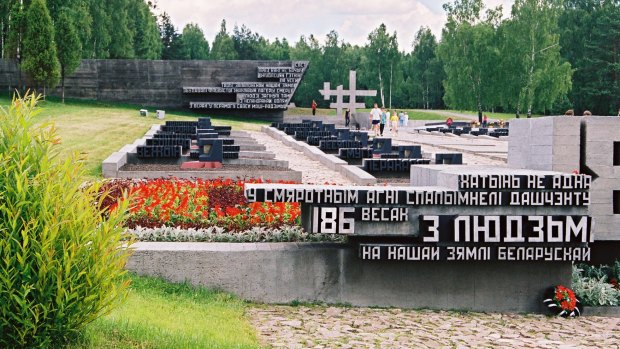
Khatyn Memorial, Belarus.Credit: Shutterstock
The man stands in the centre of the field, shoulders squared, chest bones protruding from his open vest. Every detail of the sculpture, from the tilt of his chin to the lifeless form of the child in his arms screams two things – grief and defiance.
It was here, in the village of Khatyn, on March 22,1943, that Nazi soldiers rounded up all the inhabitants, locked them inside a barn and set fire to it, killing 149 people, including 75 children. Only one adult, 56-year-old Joseph Kaminsky, survived the attack. The six-metre bronze statue – Unconquered Man (1968) by Sergei Selikhanov – depicts Kaminsky holding the body of his dead son, Adam.
Located in the Logoisk region of Belarus, 54 kilometres north-east of the capital Minsk, the Khatyn Memorial was opened in 1969 as a tribute to the Belarusians who died during the Great Patriotic War (World War II).
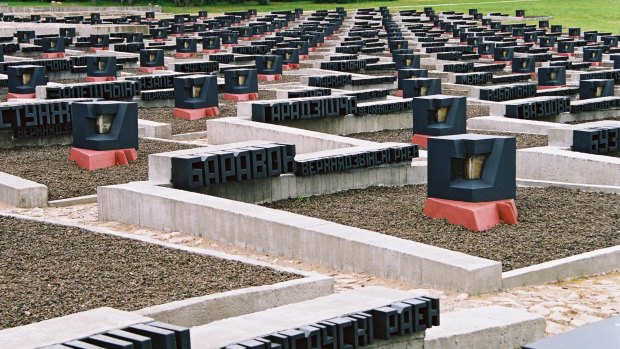
Urns containing soil from 186 destroyed villages.Credit: Shutterstock
Byelorussia as it was known, was one of the places in Eastern Europe where Hitler attempted to implement Generalplan Ost, his secret plan for the extermination or enslavement of the entire population, not just those of Jewish ethnicity. "Altogether 2.23 million Belarusian civilians were killed," tour guide Dzmitry Skvarcheuski says. "That was more than one-quarter of the population of the time."
The scale of the atrocity is unfathomable. I stare at the statue, taking in the buckled knees of the father and the Pietà-like pose of the child, unable to comprehend such loss. I've travelled to Khatyn to pay respects and to learn more about a country that has suffered so much and yet remains relatively unknown to the average western tourist.
In a matter of days I've grown used to the Soviet-era monuments – a grand obelisk here, a chiselled jaw there – glorifying the Red Army that liberated Minsk on July 3, 1944. Built to portray power and dominance, they all lack one thing – heart. The Khatyn monument is rare in that it depicts vulnerability – a single man carrying the collective grief of an entire nation.
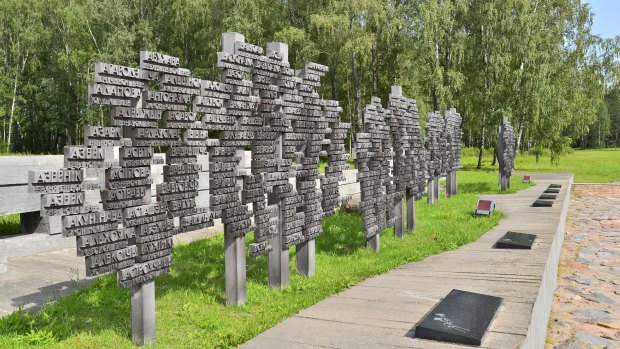
Trees of Life memorial commemorating 433 destroyed villagesCredit: Shutterstock
"During the three years of German occupation more than 600 villages were similarly annihilated by the Nazis," Skvarcheuski says. "Of these, 186 were erased permanently from the face of the earth."
A handful of soil from each of these villages has been brought to Khatyn to create the Cemetery of Villages. "Another 433 villages were similarly burned, but rebuilt," Skvarcheuski says, leading me to the Trees of Life memorial, where the names of these villages are listed as branches on trees.
It is here that my young guide falters, a PhD in history and a head for numbers no match for the fact his grandparents lived in one of these villages. "Every Belarusian has connections to these events," he says. "No one is untouched."
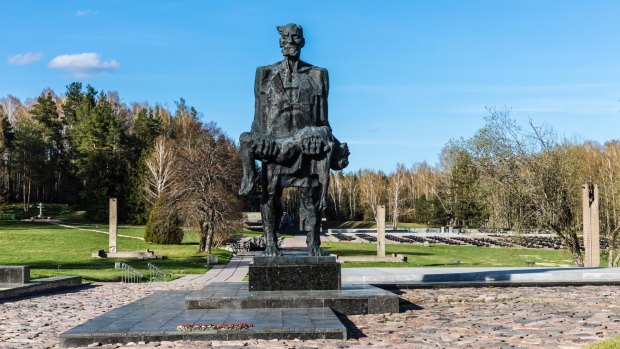
Unconquered Man (1968), by Sergei Selikhanov, at the Khatyn memorial complex.
With heavy hearts we cross the field to the first of 26 symbolic chimneys, one for each house in the village. Each is topped with a bell, and the bells are synchronised to ring every 30 seconds. The shared death knell brings tears to my eyes.
Visiting Khatyn will make you weep, with sorrow and rage. But it will also help you appreciate the Belarus of today as it begins to open its borders to the world.
TRIP NOTES
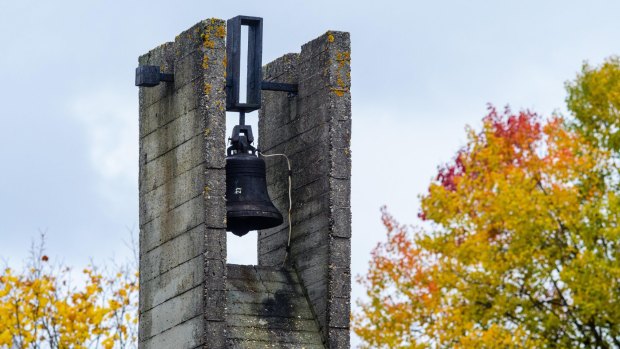
A bell in the Khatyn Memorial. Credit: Shutterstock
Kerry van der Jagt was a guest of the Belarusian Touristic Union and the Embassy of Belarus in Australia.
MORE
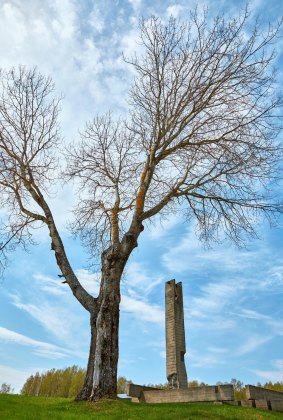
There are 26 symbolic chimneys, one for each house in the village.Credit: Shutterstock
FLY
Etihad Airways flies from Sydney and Melbourne to Minsk via Abu Dhabi. See etihad.com
STAY
Hotel Monastyrski Minsk is a 48-room hotel housed in a former 17th-century monastery. Rooms start from BYR174 (A$118). See monastyrski.by
TOUR
BelAgroTravel, based in Minsk, can organise day, overnight and multi-day tours to most popular sites. See belagro.travel
VISAS
Visa-free entry to Belarus is available for residents of 74 countries, including Australia included. You must enter and exit via Minsk National Airport and the visa is not available if you're flying to or from Russia. See australia.mfa.gov.ua/en
Sign up for the Traveller Deals newsletter
Get exclusive travel deals delivered straight to your inbox. Sign up now.